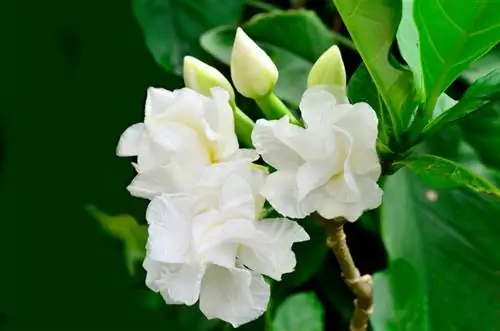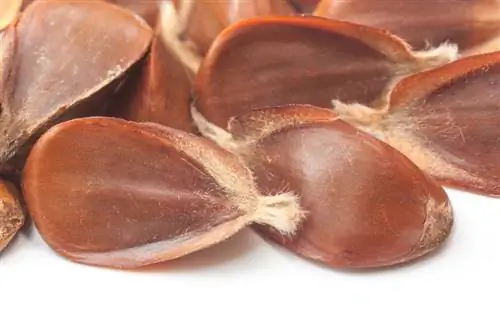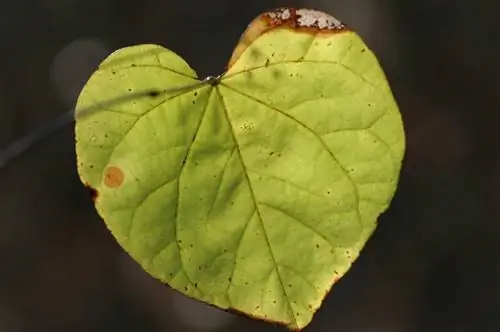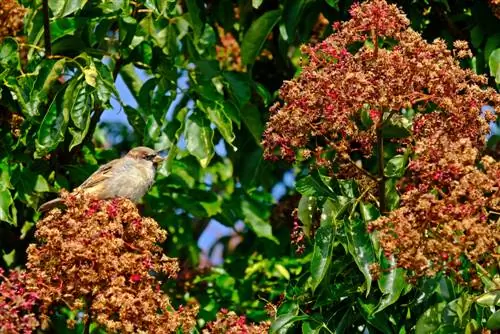- Author admin [email protected].
- Public 2023-12-16 16:46.
- Last modified 2025-01-23 11:20.
In its North American homeland, the trumpet tree is a widespread ornamental tree that can be found in many gardens and public parks because of its foliage and flower decorations - although the globe trumpet tree, in contrast to its larger relative, produces few flowers. However, all parts of Catalpa bignonioides, the botanical name of the tree, are considered to be less toxic to both humans and animals.

Is the globe trumpet tree poisonous?
The globe trumpet tree (Catalpa bignonioides) is slightly poisonous, especially its leaves, which contain the slightly poisonous catalpin. The elongated fruits and other components such as caffeic acid, ursolic acid and coumaric acid are also slightly poisonous. Gloves should be worn when cutting the tree.
All parts of the globe trumpet tree are considered slightly poisonous
With the exception of the seeds, all parts of the globe trumpet tree contain the mildly poisonous catalpin, a compound that is also said to keep mosquitoes away. The leaves of the tree in particular exude a light scent that keeps the annoying pests at bay. Other components that are also only slightly toxic are caffeic acid, ursolic acid and coumaric acid. Quinoid compounds have also been found in the wood, which can lead to allergic reactions. For this reason, you should always wear gloves when cutting the globe trumpet tree.
Tip
The elongated, bean-like fruits of the globe trumpet tree are also poisonous and are therefore not suitable for consumption.






